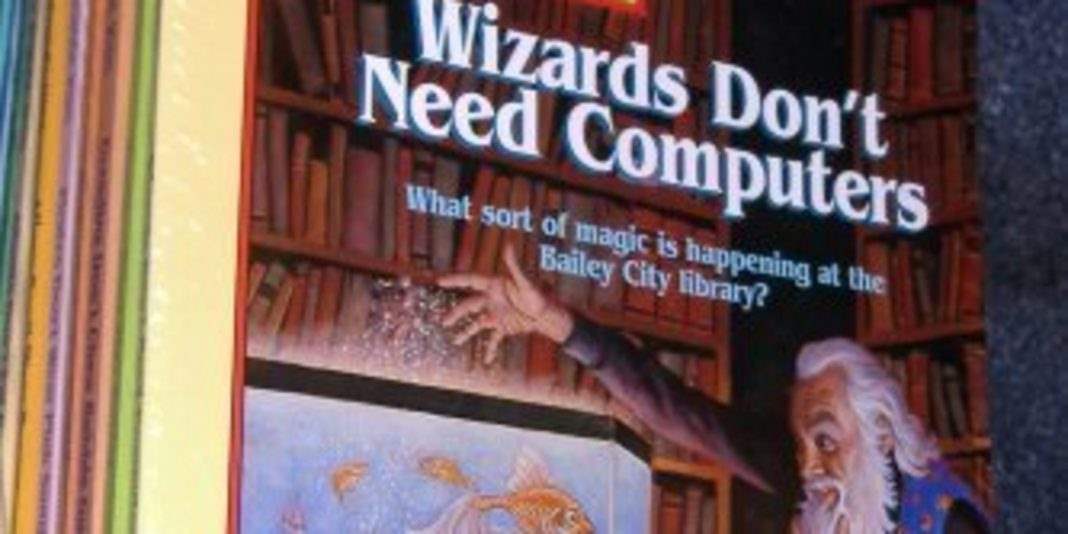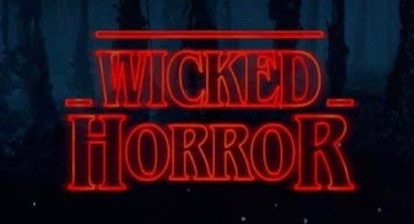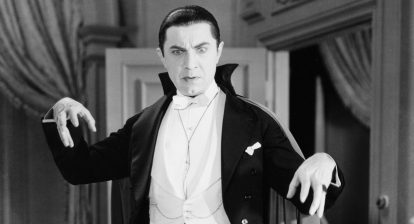Welcome back to Written in Blood, an interview series featuring novelists and screenwriters in the horror genre.
Witches are no strangers to the horror genre. From the campy and comedic Sanderson Sisters in Hocus Pocus to the carnal, devil-worshipping coven in The Witch, the spooky sorcerers have cemented their place in pop culture. Films like Suspiria (2018), Wicked, and the Disney+ series Agatha All Along show viewers’ hunger for new spins on the classic trope.
But not every iteration of witchcraft involves the stereotypes of spell books and seances, broomsticks and black cats. It’s this notion Grady Hendrix explores in his new novel, Witchcraft for Wayward Girls. The novel takes place in 1970’s Florida and centers on Fern, a pregnant fifteen-year-old sent to Wellwood House—a home for unwed mothers—to have her baby in secret. She’s terrified, alone, and just wants to go back to being a normal teenager. But when she comes across a book about witchcraft, Fern wonders if it might be the solution to all her problems.
I sat down with Hendrix to talk about the reality behind the fiction, the inspiration for his version of witches, his favorite pop culture witches, the difficulty of coming up with an ending, favorite horror recommendations, and more.
Wicked Horror: I really liked how the true horror of the story comes from how women, specifically unwed mothers, were treated back in the 1970s. Were you at all trepidatious approaching a novel surrounding womanhood and pregnancy?
Grady Hendrix: Oh, yeah, 100%. I wanted to write this book for a really long time. But I kind of stayed away from it because I couldn’t figure out a way in, and I also knew it was going to be a big chunk to bite off. I wound up working with about 12 women who had had kids, who were moms, who were really generous with sharing their experience and their birth stories with me. I did a lot of interviews with them. I had a lot of manuals, online classes, all kinds of stuff, and it was a lot, but everyone was super patient with me and let me ask stupid questions over and over again. But yeah, it was a lot. I mean, this book was supposed to be out six months ago, and I blew the deadline because I couldn’t get it done in time.
WH: Is that why you chose to set the novel in the 1970s rather than present day—because houses for unwed mothers were so much more prevalent back then?
Grady Hendrix: There always been homes for unwed mothers. But the way they existed from probably, I would say, the Baby Scoop Era, which is generally considered 45 to 73, once Roe vs. Wade came along, the houses all changed. There are still homes for unwed mothers. In fact, the New York Times just did a big story on all these problems with maternity homes down in Florida, which was strange to see. It’s hard to find numbers on this stuff, but I think the number I’ve seen the most is about between 45 and 73. About 2 million kids were born in maternity homes. And so it’s a lot of moms. It’s a lot of people who went through that experience. And even now, with the book coming out, I’m getting readers getting in touch saying ‘This was my mother. She was sent to a home. I have relatives who were sent to homes.’
WH: And I think it’s a testament to how much it was a hush, hush thing back then.
Grady Hendrix: You know, when I told people I was writing this book, they say, ‘Oh, you mean like the laundries in Ireland.’ And I’m like, well, yes, but also—the homes were always secret. I mean, the whole point of the homes was to be secret. The girls were sent there in secret. They were told not to talk about it. They didn’t know each other’s real names. They existed in the shadows, and when the bulk of them kind of went away, you know, a lot of them burned their records and they wanted to be forgotten.
WH: And then, when you compound all of these real, humanistic horrors, we also have the witchcraft element.
Grady Hendrix: Right, right.
WH: Which is a very interesting way to segue the horror in, because some of the witchy horrors are very women-centric, going back decades to the Salem witch trials. How did you settle on the rules for the witchcraft in your book? And were there any pop culture witchy touchstones that had some influence on the book?
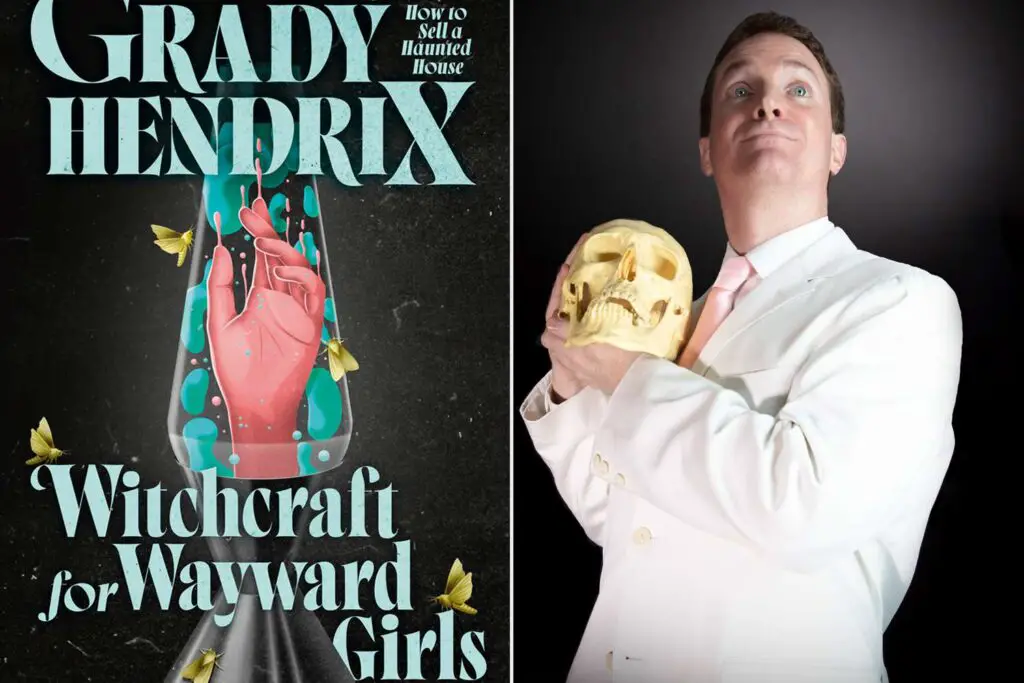
Grady Hendrix: The witches were really hard. In fact, [Witchcraft for Wayward Girls] was a folk horror novel at first. The editor was like, ‘It says witches in the title. There are no witches in this book. I think you need some witches.’ But witches are really hard because the image of the witch changes so much. Are they old ladies living in houses made of candy who eat children? Are they named Blair and torment documentary filmmakers and live in the woods? Are they a bunch of women dancing around under the moon and celebrating the goddesses? You know, all these different images of the witch exist simultaneously, and so it was really hard. So ultimately, where I found my witches…a little bit of it’s based on sort of, like, historic witches and classical witches and things. But the bulk of my witches is from activist literature from the late sixties and early seventies. Because I realized that if witches existed at that time in covens, they would be like the Weather Underground, or like the Black Panthers, or like any of these like political action groups that lived in opposition to the mainstream, and so I read a lot of stuff.
WH: It’s interesting to hear you mention the anarchy element because, as you were talking about that, that is the exact kind of vibe I got from Rose’s character.
Grady Hendrix: Oh, good. Yeah. Yeah. Well, it’s funny. Rose’s character…she’s really influenced by a character in a book called The Girls of Huntington House. It was published in the early seventies. It’s a novel, but it’s the author based it on her time as an English teacher in a maternity home. And it’s a really great book. It’s very slice of life, but it’s really well written and there’s a character in it who just will not take the hand that’s offered to her. And I was like God, that’s such a good archetype. And that’s really where Rose came from. And the funny thing about that is the book’s written by a woman named Blossom Elfman, who is Danny Elfman’s mother. She was actually quite famous for talking about maternity homes and education and things back in the day.
Also See: Satanic Panic Scribe Grady Hendrix Wants Rich People to “Stop Acting Normal” [Interview]
WH: Speaking about the witches and how they gave you a little bit of a hard time there, you wrote on your website that you wrote 8 drafts of the book: “It wouldn’t come together, until finally, at the last minute, the witches who had been trying so hard to get on the page, slipped away and surprised me.” I was wondering if there was another surprise about the witches that came to you during the course of writing the book.
Grady Hendrix: Well, it really was figuring it out on the fly with the witches because…you know, I know a lot about [vampires, slasher movies, and haunted houses]. But witches…I was sort of fabricating them as I went along. And so there’d be times I’d write a draft, and it would just be dead or inert, and I felt like I was just sort of pushing the characters around like they were puppets. I had to keep figuring out, okay, what do the witches want? Why would they be bothering with a bunch of girls in this home like that? And the easy answers were the wrong answers. And so the witches kept getting deeper and more complex as I wrote, draft after draft. I hit a point with the ending that my editor and I were really at loggerheads over. She was like, ‘I will not accept this ending.’ And I was like, ‘That is the ending.’ And we had a lot of really big fights about it. And ultimately, I realized I was really in despair. And I went back and I was reading activist literature, and I was like, Oh. Just because witches are in a coven, they’re not all going to agree with each other. And one of the signature things of the seventies and the late sixties is—there was a war between young and old people we call the Generation Gap. And both generations thought it was a war. And so I finally realized that that needed to be happening within the witches to some extent as well, and that sort of got it there. But it was a long road that was not unbumpy.
WH: Well, I think that comes through on the page because, as I was reading, you know, we want to identify and cheer on the protagonist—and in a way we do because the witches are very much coming up against Neva. But as I’m reading, I’m also thinking, You made a deal, and [the witches] just want you to honor the deal. So we have these two forces butting up against each other in that very old and young way that you just mentioned.
Grady Hendrix: Yeah. And I think, you know, one of the things with this is ‘the deal’ gets used as a cudgel so much with young people. You have a responsibility. You made an agreement. And it gets young people often to sort of, like, toe the line, right? And I feel like as much as you want to honor your commitments, it’s sometimes used against you. And there is that moment, I think, for a lot of people. I mean, I was a teenager who butted heads with everyone, and I think a lot of people have this moment, but I certainly did, where you realize, Oh, no one can make me do this. It’s words. It doesn’t matter. You know, [Neva] made these deals. She made these commitments but she didn’t quite know what they entail, you know, and she’s not given a chance to change her mind.
WH: And her prefrontal cortex isn’t closed yet.
Grady Hendrix: Yes, exactly.
WH: The excerpts from How to be a Groovy Witch were really fun. On the surface level, they’re about witchcraft as it pertains to the book, but I kept thinking how much they can be applied to the craft of writing and drafting.
Grady Hendrix: Oh!
WH: Was that similarity, that juxtaposition, intentional with witchcraft and writing?
Grady Hendrix: I didn’t really think of that. But you’re right. Everything’s a byproduct. And so, with this book, it really was a lot of accidents. And one of the accidents that occurred in this book was the beginning. That also is the end. That sort of framing device. So, there’s a book from 1906, called, I Await the Devil’s Coming by Mary MacLane. The book was just a memoir, and it was about how boring life was in Montana, where she lived, and she wanted the devil to come and like to give herself to Satan and, you know, have adventures and be interesting. That sort of opening was very much inspired by her writing style, and really was the first thing I ever wrote. And as I was getting to the end of the book, I was like, Well, how am I going to end this? This was a year not knowing how it was gonna end. And I was reading through the book, and I was like, Oh. If there’s a beginning addressing the reader, there should be an end addressing the reader, and it needs to sort of like be the same. It all sort of, like, suddenly slid into place. And so really, this first thing that I’d written became the last part of the book, and sort of solved the ending of the book, and I don’t think the book has the same impact without it
WH: I would agree. I didn’t have that sense of emotional catharsis until that epilogue. And I think that really was like the cherry on top, tying everything together.
Grady Hendrix: Oh, good. I’m glad it worked. Yeah. Yeah. But you know, also, just speaking of craft stuff, there was a really weird thing with this book where I really wanted to write [Witchcraft] in first person, present tense because I didn’t want it to feel like a historical piece. I wanted it like really close and up in the reader’s face, and I wrote a couple of drafts that way, and people hated it. And what I realized is that it was too hot, and it was too loud, and readers needed that distance of third person and past tense—readers were thinking I was stupid because the characters seemed stupid, and they were making a lot of sort of very emotional comments about the characters like, ‘Oh, they’re idiots! I wanted to slap those girls!’ And really it was just by [switching to] third person, past tense that suddenly people were able to sort of hold them at arm’s length and see them as characters, and not as something up in their face they had to react against.
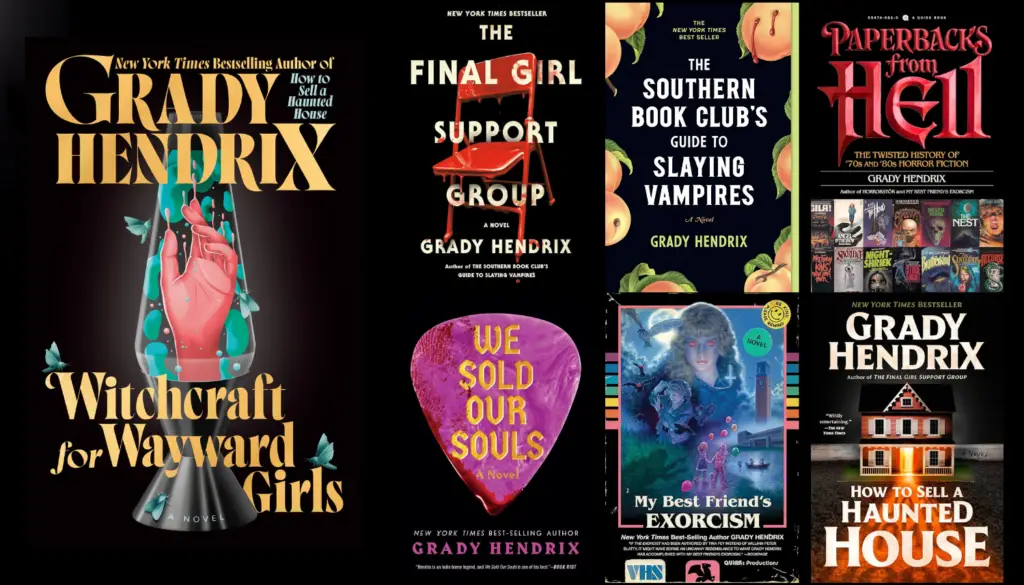
WH: You’ve written about witches, puppets, demons, haunted houses, a haunted Ikea. Are there any horror tropes or settings that you would still like to explore that you might not have might not have done yet?
Grady Hendrix: Oh, yeah. I mean, I’m already working on my next book, which is about Bigfoot. So yeah, there is an infinite number of books and stories I want to write. The one I can’t do is zombies. I take zombies too seriously. Can’t do it.
WH: And it’s hard because zombies have been done so much since The Walking Dead came out.
Grady Hendrix: The one thing I keep waiting for—and I see people eating around the edges of it, but I haven’t seen anyone crack it yet—is the horror of the Internet. You know, like how we’ve sort of created this virtual world that we spend so much of our time in. And I think some people—like Jane Schoenbrun with I Saw the TV Glow and We’re All Going to the World’s Fair—is like nibbling around the edges of that, but I don’t think anyone’s quite cracked it yet. I don’t think I’m going to be the person to do it. I’m too old.
Did You Know? Wicked Horror TV Has Classic and Independent Horror Films Available to Stream for Free!
WH: Do you have a favorite pop culture portrayal of witches that maybe didn’t influence Witchcraft for Wayward Girls, but one that you turn to as something that really gets it right?
Grady Hendrix: Oh, yeah, I feel like there’s so many. One is Helena Markos in Suspiria, the Dario Argento version. I just love her. She’s just having so much fun being a witch. But one of the bleakest, and one of my favorite depictions of witches is…a movie called Witchhammer. This is [a] Czechoslovakian movie from 1970. That’s about the witch hunt. And it takes this very forensic look at it, and it is truly horrifying.
WH: I’ve never heard of that.
Grady Hendrix: It’s black and white, and it’s just intense.
WH: The way you’re describing it. It makes me think of one of those movies that after you watch it, you feel like you have to take a shower after, like Requiem for a Dream.
Grady Hendrix: Yeah, exactly. You get to the end and you’re like, ‘Oh.’ Everyone just lives this impoverished, rural lifestyle and there’s never any joy. It’s only more misery on top of misery. And then some yuck shows up burning witches, and you’re like, ‘Oh, really, this is the cherry on my life!’
WH: That’s how I felt when I went to see the new Nosferatu this weekend.
Grady Hendrix: Oh, yeah, what do you think?
WH: The production design, the lighting, the color grading, the acting was all great. The story was a little slow for me. But it made me think what you were talking about now about having no joy because I don’t think the sun came up once in that movie.
Grady Hendrix: Yeah, I was listening to an interview with Robert Eggers, and he’s like, ‘The producers are so mad because, I was like, it’s got to be gloomy. We gotta wait for the sun to go behind a cloud.’
WH: Yeah, totally, I definitely got that.
Grady Hendrix: It was a slow movie, but I had a lot of fun. I thought it was very really kinky and very sort of, like, funny and really dark. You know, I really enjoyed it. But yeah, I agree. It’s a little slow moving. I like his movies. I don’t love them. I’m glad he exists. I appreciate what he does, but I feel like having the bones of the Nosferatu / Dracula story really helped for it to feel like it had more of a story to it.
Also See: Why Werner Herzog’s ‘Nosferatu’ is Actually the Better Movie
WH: Are you reading anything or watching anything in the horror space that you’d recommend?
Grady Hendrix: Oh, yeah. Two books that are new to me that I just read—one is a book from 1996 called The Tulip Touch by Anne Fine. It’s written for kids, but man it is brutal. It is British, and it’s about two girls—one’s good and one’s bad, and it just goes in really unexpected places. I read it in, like, a day. It’s a very fast read, but the writing’s beautiful, and it’s just unsparing and sort of, like, how kids don’t become monsters. We make them monsters, and then we blame them for being monsters. And then another book I just read, which I loved a lot as well—The Department of Truth by James Tynion. It’s basically about a department in the United States government that keeps conspiracy theories from becoming reality.
And then the two best horror movies I saw last year—one was I Saw the TV Glow. I feel like anyone can relate—anyone who feels like the life I’m supposed to be living is somewhere else. Like, I made a terrible choice, and I can’t get back to where I’m supposed to be. I just found it really moving. And then the other one is this Hindi movie that came out last summer called Kill. It’s basically sort of a John Wick / Liam Neeson kind of movie. It’s, like, an Indian commando, tough guy, and he’s on a train with his fiancé, and these bandits take over the train and begin robbing everyone, and he’s got to save his fiancé. It is such an amazing deconstruction of the John Wick franchise, or these Liam Neeson revenge movies. It turns into what I think is one of the most unsettling slasher films of all time.
WH: When you’re watching these horror movies that are maybe more intense than you anticipated, what would be the thing that makes you say too much, and watch through your fingers?
Grady Hendrix: Honestly, I mean, it’s a lot of things. If I care about the characters, I don’t want to see anything bad happen to them. But I will say something I’ve become really attuned to lately is head trauma. Head trauma really upsets me. I mean, I know people who just had really simple accidents and developed really severe brain damage from them. And so when I see someone get punched in the head or have someone hit them in the head with a hammer? I I’m cringing.
WH: When you change one thing—whether it’s the score or the camera angles or the lighting—it completely changes the tone.
Grady Hendrix: Absolutely. I mean, tone is so delicate in a movie. And I’ve realized that that’s something you really have to establish in a screenplay, even if you do it in a sloppy way in the scene directions where you’re like, ‘He’s joking, but he’s not joking’, or something like that. You have to establish that tone, because people feel so lost without it.
WH: So I’m guessing when and if Witchcraft for Wayward Girls becomes adapted, we’re not going to see it as a sitcom.
Grady Hendrix: Probably not, although I’m amazed. No one will touch it.
WH: Really?
Grady Hendrix: Yeah, because it’s about pregnancy. It’s about pregnant teenagers. And that’s really not the mood of the country right now. And so people are like, ‘I love this book. I would love to do something with it. I can’t do anything with this.’
WH: That’s really surprising to me.
Grady Hendrix: Yeah, I was really surprised. Yeah, I get it.
WH: Has there been anything else in the pipeline from your back catalog that’s getting ready to be adapted?
Grady Hendrix: Yeah, I mean, How to Sell a Haunted House and Horrorstör. Both have scripts and directors and waiting to sort of [take] that last step. They’ve gone through numerous drafts. Southern Book Club is still set up as a series at HBO, but HBO is a little bit in chaos right now. And Final Girl Support Group was set up as a series for HBO, but now a director came on board and it seems to be changing tactics. So yeah, everything’s sort of somewhere, you know, except We Sold Our Souls and Witchcraft.
Witchcraft for Wayward Girls hits bookstores on January 14th.
[This interview has been edited for length, content, and clarity]
Be sure to follow us on social media: Twitter and Facebook




